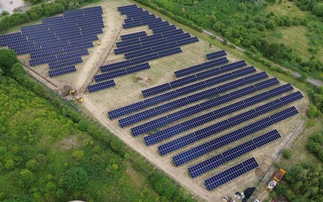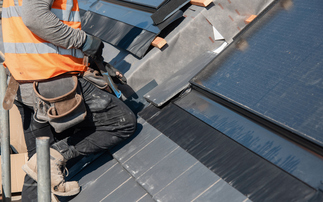Almost 500 solar panels will provide electricity for terminal shops and cafés while avoiding 1,000 tonnes of CO2 emissions
Passengers arriving or departing London Southend Airport will now get a bird's eye view of 496 solar panels installed as part of a £10m terminal expansion.
The system, the UK's largest solar installation at an airport, has been installed on the terminal's curved tunnel-shaped roofs to supply its range of shops, cafés and restaurants with clean power through the airport's private electricity network.
The panels are expected to help the terminal achieve a BREEAM Very Good environmental assessment rating and to avoid around 1,000 tonnes of carbon dioxide emissions over the next 20 years.
Generating its own electricity forms part of a package of environmental measures at London Southend Airport, including sustainable drainage, specialist coating to improve insulation, extensive glazing to enhance natural lighting and slow start escalators.
Airports are considered particularly good sites for solar installations as they have a lot of roofspace and large daytime electricity consumption. Kuala Lumpur airport has fitted a 19MW solar system across terminal roofs, parking canopies, and ground space, while Gatwick has installed 212 panels by the side of the main runway.
Similarly, distribution centres have also been targeted as suitable spots for solar panels by companies such as Ikea, Marks & Spencer, and now heating and plumping company Wolseley.
More than 8,000 solar panels have been fitted on the roof of Wolseley UK's National Distribution Centre (NDC) in Leamington Spa, covering an area roughly the size of two football pitches. The 2MW system installed by Mark Group is expected to produce 10 per cent more energy than the NDC needs, while generating revenues of up to £6.5m over 20 years under the government's feed-in tariff subsidy scheme.
Chris Roberts, head of solar at Mark Group, said the system should pay back within seven years and avoid around 1,280 tonnes of annual carbon emissions through passing exhaust air from the inverters into the building's heating systems to further reduce the building's impact.
"The rise in energy prices and the levelling off of installation costs means that 2014 is a sweet spot for businesses installing solar PV," he added. "The government's feed-in tariff continues to fall slowly, so now is the time to invest in solar to obtain the best payback."









